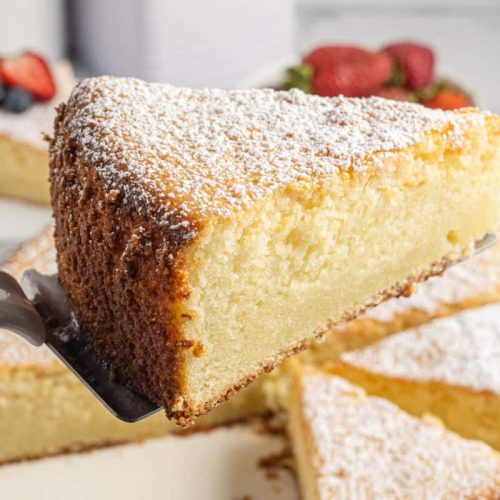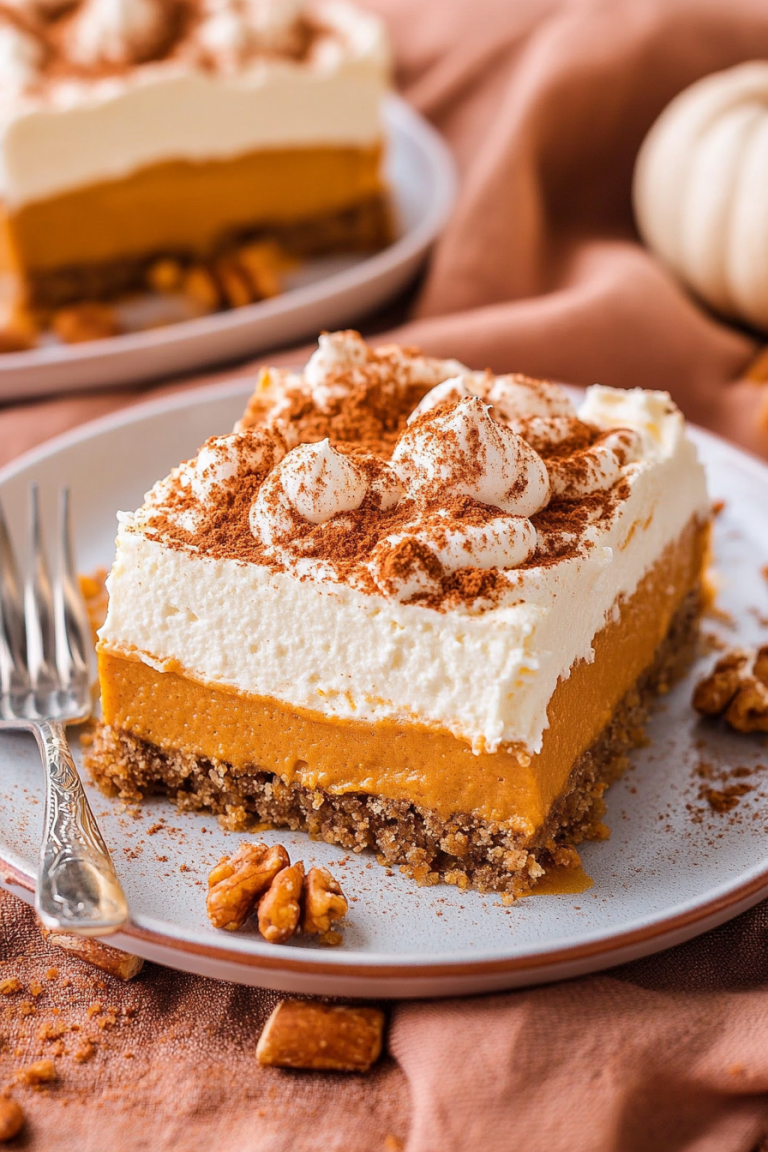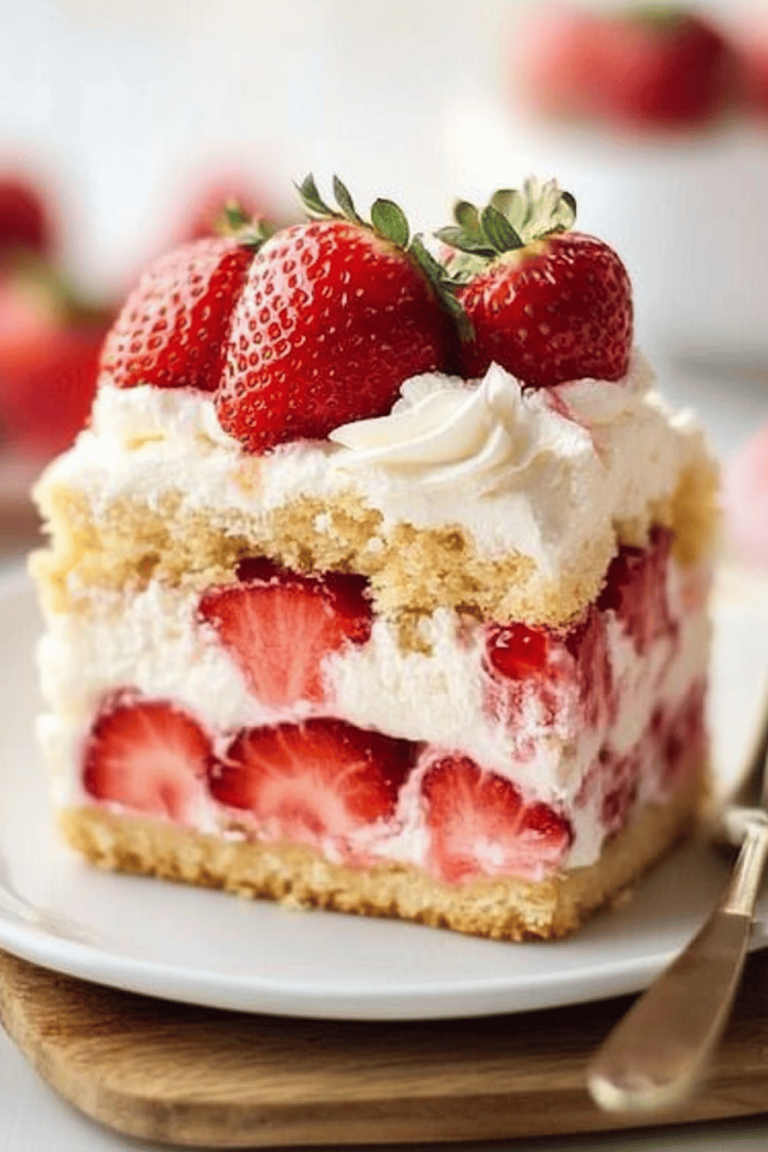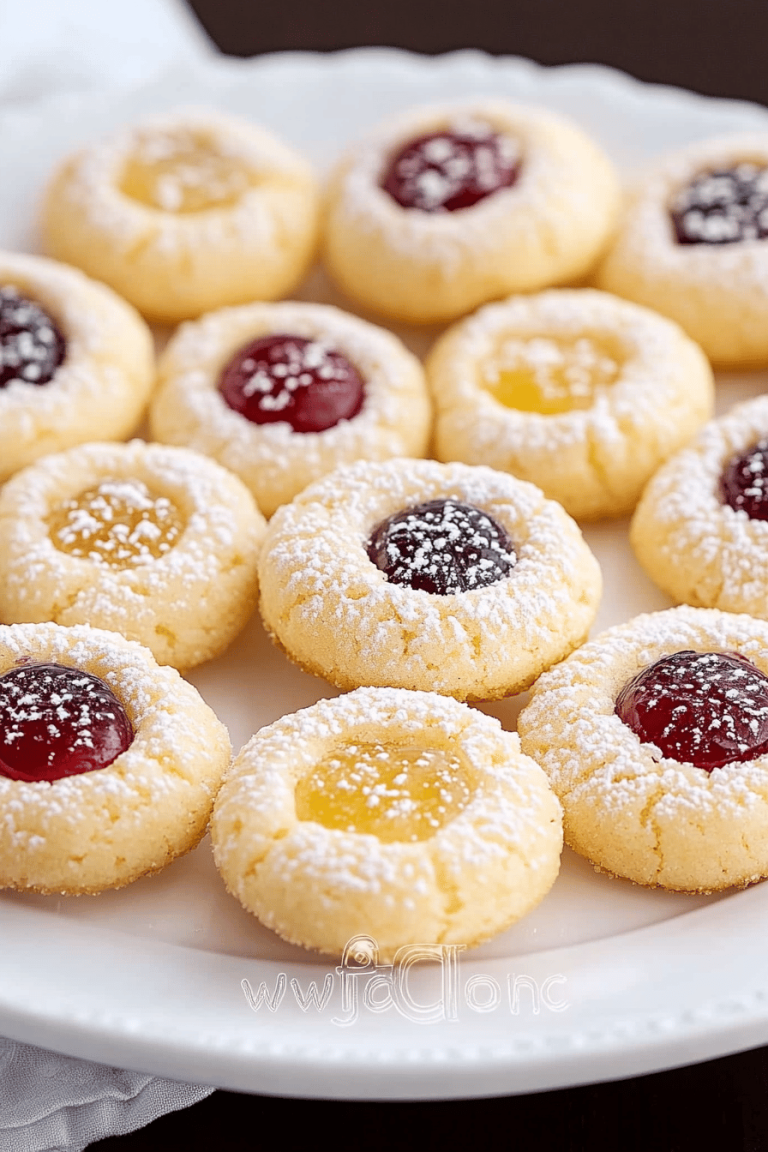I’ve got a soft spot for the way a slice of lemon sunshine can turn a ordinary Tuesday into a small celebration. This Lemon Ricotta Cake, with its tender crumb and bright citrus kiss, is the reason I keep a stash of lemons on the counter and a jar of ricotta chilling in the fridge. It’s not just delicious; it’s also incredibly forgiving—the kind of cake you can bake after a long day and still feel like you did something wonderful. I remember the first time I shared a warm slice with my sister after a chaotic week; the kitchen filled with laughter, and the cake disappeared in minutes. It’s incredibly versatile, too—my kids ask for this all the time, and I’ve found it shines just as well for brunch as for dessert. This Lemon Ricotta Cake has become a little family ritual, a recipe that travels well between late-night cravings and weekend gatherings, always leaving everyone a little brighter than before.
What is lemon ricotta cake?
Think of Lemon Ricotta Cake as a bright, comforting loaf turned cake—tender, moist, and studded with lemony spark. It’s essentially a classic sponge with the unexpected, luxurious addition of ricotta in the batter. The ricotta adds a gentle creaminess and tenderness that you don’t quite get from regular oil and milk alone. The name comes from the star dairy ingredient, but the real showstopper is the lemon: zest for perfume, juice for zing, and a glaze that glances across the top like a sunlit glaze. This cake is what I reach for when I want something that feels polished enough for company but still homey enough for a casual weeknight treat. It’s a hybrid of a cake and a dense lemon loaf, and it wants to be shared with friends over coffee or a cozy afternoon chat. It’s essentially simple, but it tastes like sunshine and a little celebration all at once.
Why you’ll love this recipe?
What I love most about this Lemon Ricotta Cake is how it instantly elevates the everyday. It’s a dessert that tastes like you fussed, but you didn’t—the batter comes together in a bowl, the filling swirl handles most of the drama, and the glaze does the gleaming finish. It’s not a temperamental diva; it’s a friendly neighbor who brings cookies to your door. Here’s why this one sticks around in my kitchen:
- Flavor: Bright lemon lifts a creamy, slightly tangy ricotta base, so every bite feels fresh and comforting at once. The glaze adds a final wink of citrus that lingers on the tongue without overpowering the cake.
- Simplicity:I’ve whipped up this in under an hour from start to finish on busy weeknights.
- Cost-efficiency: What is the best way to measure cost-efficiency? pantry staples and a few dairy components do the trick, and you get a big, satisfying cake that stretches to several servings for friends and family.
- Versatility: It’s fantastic for breakfast with coffee, brunch for weekend guests, or a simple dessert with berries. You can swirl in zestier lemon, a touch of vanilla, or even a ribbon of lemon curd for a different twist.
- Texture & aroma: The ricotta keeps the crumb incredibly moist, while the lemon zest perfumes the whole kitchen as it bakes. Trust me—your whole house will smell like a bright, sunny kitchen.
Every time I bake Lemon Ricotta Cake, I think about the little rituals that go with it—zesting the lemons until the scent clings to your fingers, tapping the batter lightly to release air, and that first warm slice with a glossy glaze catching the light. If you’ve got a craving for something sweet but not heavy, this cake is your lifesaver on busy nights. And yes, I’ve compared it to other lemon desserts I adore (like a pale, airy lemon chiffon), but this one’s the friend you reach for when you want something that feels like a hug and tastes like a celebration.
How to Make Lemon Ricotta Cake
Quick Overview
This Lemon Ricotta Cake comes together in a pretty straightforward sequence: whisk the dry ingredients, whisk the wet ingredients, combine just until smooth, swirl in a lemon-ricotta filling, bake until the toothpick comes out clean, then glaze while it’s warm. The magic happens because the ricotta keeps the crumb tender and the lemon keeps it lively. You’ll have a cake that’s sturdy enough to slice and serve at room temperature, yet soft enough to feel nearly like a custardy dream when you take a bite. It’s a great method for when you want a single-pan bake with a pretty, glossy finish.
Ingredients
For the Main Batter:
- 1 3/4 cups all-purpose flour
- 1/2 cup granulated sugar
- 1 teaspoon baking powder
- 1/4 teaspoon baking soda
- 1/4 teaspoon salt
- 3/4 cup ricotta cheese
- 2 large eggs
- 1/2 cup milk
- 1/4 cup neutral oil (like canola or light olive oil)
- 2 tablespoons finely grated lemon zest
- 2 tablespoons fresh lemon juice
For the Filling:
- 1/2 cup ricotta
- 2 tablespoons granulated sugar
- 1 tablespoon lemon juice
- 1 teaspoon lemon zest
For the Glaze:
- 1 cup powdered sugar
- 2–3 tablespoons fresh lemon juice
- Optional: extra lemon zest for a bright finish
Step-by-Step Instructions
Step 1: Preheat & Prep Pan
Heat your oven to 350°F (175°C). Grease a 9-inch round cake pan and line the bottom with parchment. A quick spray of nonstick spray plus a careful parchment helps the cake pop out cleanly. If you’re using a springform, give the ring a light spray, too. This is the kind of cake you’ll want to slice perfectly, so take a moment to prep the pan properly—your future self will thank you when you unmold a clean, even cake.
Step 2: Mix Dry Ingredients
In a medium bowl, whisk together the flour, sugar, baking powder, baking soda, and salt. I always whisk for about 30 seconds until the dry bits look uniform and pale. This step matters because it seeds the batter with air and ensures the cake rises evenly without dense patches. If you’ve got a sifter, give the dry mix a quick pass; it can help fluff the texture a touch more.
Step 3: Mix Wet Ingredients
In another bowl, beat the eggs. Whisk in the ricotta until smooth, then add milk, oil, lemon zest, and lemon juice. The lemon aroma is like a little promise of brightness, so don’t skip the zest—it wakes up the whole cake. If your ricotta is very thick, whisk a spoonful of milk into it first to loosen it up a touch. This keeps your batter from getting stiff and stubborn.
Step 4: Combine
Pour the wet ingredients into the dry and stir just until the batter comes together. A few lumps are perfectly fine; overmixing can toughen the crumb, and this cake wants to stay tender. If you see a stray streak of flour, fold it in gently with a spatula rather than beating it out with vigor.
Step 5: Prepare Filling
In a small bowl, mix together the filling ingredients: ricotta, sugar, lemon juice, and lemon zest. Taste as you go—the filling should be bright but not sharp. If you like an extra lemon kick, add a whisper more zest. The filling is the little secret swirl you’ll see in the middle of the cake, giving bites of creamy lemon goodness throughout.
Step 6: Layer & Swirl
Pour about half of the batter into the prepared pan. Spoon dollops of the filling across the batter, then layer the remaining batter on top. Use a knife or skewer to swirl gently, creating ribbons of filling that peep through the surface. Don’t over-swirl—our goal is a pretty marbled look and pockets of creamy lemon in every slice, not a uniform swirl.
Step 7: Bake
Bake for 45–55 minutes, or until a toothpick inserted into the center comes out with a few moist crumbs. Oven temperatures vary, so start checking at 40 minutes if your oven tends to run hot. The top should be lightly golden and spring back to a gentle touch. If the center wobbles, give it a few more minutes but avoid overbaking, which can dry out the crumb.
Step 8: Cool & Glaze
Let the cake rest in the pan for about 15 minutes, then loosen the edges and transfer to a rack to cool completely. A warm cake takes a glaze best, so a glaze that’s a touch warm will spread more evenly. Whisk powdered sugar with lemon juice until you reach a pourable, glossy consistency. If it’s too thick, add a tiny splash of water or more lemon juice; if too thin, add a bit more sugar. Drizzle in gentle, slow motions and let the glaze settle into the surface for a polished finish.
Step 9: Slice & Serve
Use a sharp knife to slice cleanly, wiping the blade between cuts for neat pieces. Serve with fresh berries, a dollop of whipped cream, or a simple lemon wedge on the side. The glaze will set as it cools, creating a subtle gloss that makes the cake look as good as it tastes. I like serving a slice with a hot cup of tea or coffee—the citrus aroma floods the room and invites conversation.
What to Serve It With
This Lemon Ricotta Cake shines in many settings, from a quiet tea moment to a lively brunch. Here are a few ideas that pair beautifully and feel just-right:
For Breakfast: A slice with a cup of strong coffee, a smear of lemon curd on the side, and a few almonds scattered on top for crunch.
For Brunch: Layered on a cake stand with fresh berries and a side of lightly whipped cream, plus a sparkling lemonade or a minty iced tea to echo the lemon brightness.
As Dessert: Serve with vanilla yogurt or crème fraîche and a few berry compotes. A delicate vanilla bean Ice Cream also works wonders, melting into the warm glaze as you dig in.
For Cozy Snacks: A quick pairing with lemon-scented whipped cream or a spoonful of lemon curd turned into a light frosting on the side—perfect for a late-night treat when you crave something comforting but not heavy.
My family has a tiny ritual around this cake: we cut it into generous wedges, sit on the porch with a plate of strawberries, and talk about small joys from the week. It travels nicely too—I’ve mailed a loaf to a friend who was having a rough week, and the way a mile-high lemony crumb traveled in the post brought a smile when they opened the box. It’s the kind of cake that tastes like comfort but feels like sunshine in a slice.
Top Tips for Perfecting Your Lemon Ricotta Cake
Delving into a few tested tips will help you nail a consistently tender, bright lemon cake every time. These are things I learned after a few imperfect bakes that taught me what matters most with this particular batter.
Lemon zest & juice: Zest the lemons finely and zest before juicing. The zest oils are powerful; a quick, fine zest distributes more evenly and avoids large strips that can overwhelm a bite. I like to add the zest to the wet ingredients to release its perfume, then blend in the juice for brightness. Fresh is best—the moment you use bottled lemon juice, you’ll notice a flattening in aroma.
Mixing & texture: Stop mixing as soon as the dry ingredients disappear into the wet. A few small lumps are fine; overmixing makes the crumb tougher. If your batter seems a touch stiff, rest it for 5 minutes and it will loosen with the lemony warmth radiating from the bowl.
Filling swirl design: Don’t overfill the batter with the filling. A few spoonfuls here and there create a pretty marbling; too much filling can cause pockets of dense, cheesy-white streaks. You want little ribbons of tangy creaminess that surprise you in every bite.
Ingredient swaps: If you want a lighter cake, substitute half of the ricotta with mascarpone; you’ll still get creaminess, but with a silkier feel. For a dairy-free option, try almond ricotta or Coconut Cream-based ricotta alternatives and use a plant-based milk. You’ll notice a slightly different texture, but the lemon brightness remains delightful. If you’re watching sugar, you can reduce to 1/3 cup, then adjust glaze accordingly to maintain balance.
Swirl patterns: For prettier marbling, drag a skewer in long, gentle strokes from the center to the edge, then rotate the pan a quarter turn and repeat. Each pass should leave a subtle, sun-kissed ripple across the surface rather than a harsh swirl.
Baking tips: Use a light-colored metal pan if you can; it bakes more evenly than dark pans, which can brown the edges too quickly. If you notice the cake browning too fast, tent with foil halfway through the bake. Check doneness with several test inserts; you’ll know it’s done when the center springs back and a clean toothpick emerges with just a few moist crumbs.
Glaze variations: If you want a thinner glaze, add a touch more lemon juice or a splash of water; for a thicker glaze, add a touch more sugar. A glaze with lemon zest on top adds a final aroma that makes the cake feel fresh from the bakery. Alternatively, dust with powdered sugar and serve with a lemon wedge for a lighter finish.
In short, lemon, ricotta, and a gentle bake are a trinity that works because each element plays a supportive role. The cake tastes like a memory—bright and comforting at once. My lessons learned? Don’t rush the glaze; let it set a touch so it gleams, and don’t overthink the swirl—perfect imperfection is what makes this Lemon Ricotta Cake look and feel handmade, which is exactly how I like it.
Storing and Reheating Tips
Storing this cake correctly keeps that tender crumb intact and the glaze glossy. Here’s how I handle it in practice, with a few tips from experiments in my kitchen:
Room Temperature: If you’re going to slice soon after baking, you can leave it covered lightly with a clean towel on the counter for up to 2 days. The lemon aroma will linger, and the crumb will stay soft. If it’s warm in your kitchen, aim for refrigeration or a cooler spot to preserve the glaze and keep the texture intact.
Refrigerator Storage: Wrap tightly in plastic wrap or place in an airtight container. It will stay fresh for about 4–5 days, though the glaze may soften slightly in the fridge. Let it come to room temperature for about 20 minutes before serving to regain some of that bakery-soft crumb.
Freezer Instructions: You can freeze the whole cake or slices. Wrap tightly in plastic, then again in foil, or use a freezer-safe container. It will maintain quality for up to 2 months. Thaw overnight in the fridge and bring to room temperature before glazing if you prefer a glossy finish on thaw.
Glaze Timing: If you’re freezing the cake, you can freeze it unfrosted and add glaze after thawing, or freeze with a glaze that’s been set and gently rewarm the cake to re-soften the surface. If you’re storing unfrosted, glaze just before serving to keep a clean shine.
These storage methods keep the Lemon Ricotta Cake tasting bright and fresh. It holds up well for a few days and remains wonderfully edible even after refrigeration, which is a relief on busy weeks when you need to pull a dessert from the fridge and still enjoy it with friends and family.
Frequently Asked Questions
Final Thoughts
This Lemon Ricotta Cake has earned its place on my baking shelf because it’s dependable, cheerful, and adaptable. It tastes like a hug you can share with friends and family, and it forgives those days when you forget to pre-measure and still comes out tasting like you planned it all along. If you’re in the mood for something bright, comforting, and a touch elegant, this is your recipe. I hope you’ll try it, tweak it to make it yours, and tell me how your kitchen smells when the lemon zest hits the air. Happy baking—and I can’t wait to hear how yours turns out!
If you’ve made Lemon Ricotta Cake, I’d love to hear about your twists—whether you swapped in a different citrus, tried a different glaze, or plated it with a favorite topping. Leave a comment, drop a rating, and share your own variations. May your mornings be bright, your coffee be strong, and your kitchen filled with the citrusy warmth of Lemon Ricotta Cake.

Lemon Ricotta Cake
Ingredients
Main Ingredients
- 1.6667 cup granulated sugar
- 1 tablespoon lemon zest
- 12 tablespoon unsalted butter softened to room temperature
- 15 ounce ricotta cheese
- 3 count large eggs
- 2 tablespoon lemon juice
- 1.5 cup all-purpose flour
- 2 teaspoon baking powder
- 0.5 teaspoon kosher salt
- 0.25 cup powdered sugar for dusting cake
Instructions
Preparation Steps
- Preheat the oven to 350 degrees F. Grease a 9-inch round springform pan and set aside.
- In a large bowl, cream the butter and sugar until light and fluffy. Add the ricotta and lemon zest and mix until smooth.
- Beat in the eggs one at a time, then add lemon juice and mix until combined.
- Stir in flour, baking powder, and salt just until the batter is blended. Do not over mix.
- Spoon batter into the prepared pan and smooth the top. Bake for about 50 minutes, or until a toothpick inserted in the center comes out clean.
- Let cake cool on a rack, then dust with powdered sugar and slice to serve.







